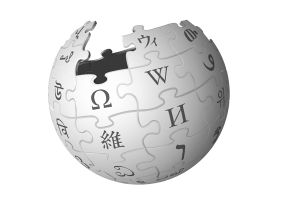Wikipedia Formatting Basics

Building on our previous experience with editing Wikipedia, this week we will have a look at some formatting basics and begin using them in our journal posts. Let’s begin with a tutorial on formatting and a more comprehensive look at wikitext.[1] Therefore, we must decide how pages on Wikipedia might most easily be used and the tools that the platform provides us for writing.
One of the golden rules of writing text that’s meant to be read off the screen is to think of usability and scan-ability — both of which consider the needs of the user in design and composition. According to “User Experience Basics,” usability may be evaluated by several factors, including ease of use.[2] Barr, in The Yahoo! Style Guide, states a “site is more usable when it is easy to navigate, meets visitors' needs and expectations, and provides a satisfying experience.”[3]
Wikipedia Usability Strategies
- Avoid large blocks of text. According to Jacob Nielson, people do not read on the web, they scan.[4] Therefore, blocks of text (i.e., long paragraphs), while acceptable and even expected in books, must be broken up on the screen to be scan-able. Nielson suggests one idea per paragraph.
- Use descriptive sections. Having different headers and subheads breaks up the information into related and digestible chunks.
- Highlight keywords with bold or italic text. Links, too, since they are a different color, draws the user’s eye to important elements in the text. You might also use bulleted lists or numbered lists when appropriate.
- Trim your prose to half the words you would normally write. Make each word count. Use active voice and what Nielson calls “marketese,” a subjective style using boastful claims — this is inappropriate for Wikipedia anyway.
- Promote credibility by labeling images, using descriptive keywords in titles and headers, captioning images, and keeping users engaged.
Notes
- ↑ Again, you might bookmark these pages for your reference, as there is a lot of information to digest.
- ↑ "User Experience Basics". Usability.gov. U.S. Department of Health and Human Services. n.d. Retrieved 2019-07-16.
- ↑ Barr, Chris (2010). The Yahoo! Style Guide. New York: St. Martin's Griffin. pp. 12–13.
- ↑ Nielson, Jakob (October 1, 1997). "How Users Read on the Web". Nielson Norman Group. Retrieved 2019-07-16.
